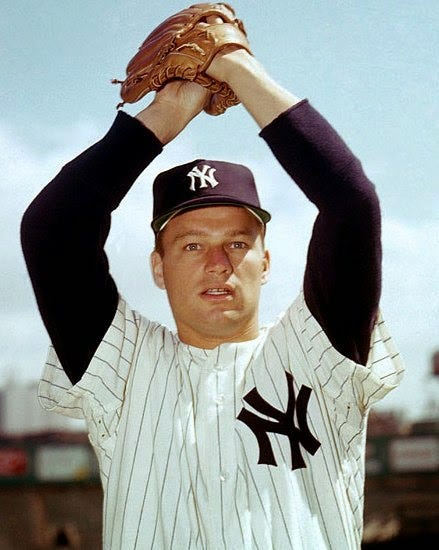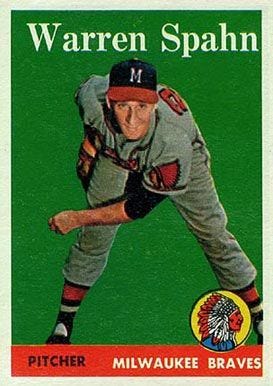File Settings
IBWAA members love to write about baseball. So much so, we've decided to create our own newsletter about it! Subscribe to Here's the Pitch to expand your love of baseball, discover new voices, and support independent writing. Original content six days a week, straight to your inbox and straight from the hearts of baseball fans.
Pregame Pepper
Did you know…
Pittsburgh stud Paul Skenes is the only No. 1 amateur draft pick to be caught in the majors by another No. 1 amateur draft pick (Henry Davis) . . .
In four of his first 28 starts, he has pitched to either a former No. 1 pick or a No. 2 pick (Joey Barts) . . .
Skenes has also pitched against former LSU teammate Dylan Crews, the nation’s No. 2 pick the same year Skenes was No. 1 (2023) . . .
Speaking of former No. 1 picks, Bob Horner was the quickest to connect, homering 10 days after the Atlanta Braves drafted him in 1978 and brought him straight to the big leagues . . .
And two-sport star Bo Jackson, taken first in the 1986 amateur baseball draft, hit his first home run before scoring his first NFL touchdown.
Leading Off
The Greatest Pilots (All-Time): Part 2, Pitchers
By Paul Semendinger
The Seattle Pilots existed for only one major-league season (1969), but because that season is chronicled in Jim Bouton's notorious book Ball Four, the team lives on forever in the hearts of many baseball fans.
While many of the Pilots had careers that were not all that noteworthy, there were a few players on the team who went on to have somewhat lengthy and significant careers.
This is the second article in a two-part series. Last week, I ranked the top five greatest position players to have played for the Seattle Pilots. Today I'll determine the top five pitchers to have played for the Pilots.
Honorable Mention: Jim Bouton
Some readers will probably take issue with this pick because it can be argued that Jim Bouton wasn't even the sixth-best pitcher to play for the Pilots. (That honor might go to Jack Aker, who pitched for 11 seasons, mostly out of the bullpen and even led the A.L. in saves in 1966.) Bouton was an All-Star who went 21-7, 2.53 in 1963 and followed that up with an 18-win season in 1964. Unfortunately for Bouton, his career went south after that. He won a combined 14 games over his final six seasons. Bouton, though, also made a successful comeback and, after leaving baseball after the 1970 season, returned to pitch in the big leagues for five games with Ted Turner’s Atlanta Braves in 1978. Without Bouton's Ball Four, the Pilots would be all but forgotten. That is good enough for me to award him Honorable Mention.
5th Place: Diego Segui
The "fireman" out of the bullpen, who also started for the Pilots in 1969, Diego Segui appeared in 66 games, going 12-6 with 12 saves and an ERA of 3.35. No pitcher appeared in more games than Diego Segui for the Pilots. Over the course of his 15-year career, Segui pitched for the Kansas City A's, Oakland A's, St. Louis Cardinals, Boston Red Sox, Washington Senators, and Seattle Mariners, in addition to the Pilots in his career. In 1970, while pitching for the Oakland A's, Diego Segui led the A.L. in ERA (2.56). He was the only player to be a Pilot and a Mariner and was actually an Opening Day starter for both clubs. Over 15 seasons, Diego Segui accumulated 12.0 WAR.
4th Place: Marty Pattin
Marty Pattin didn't do so well for the Pilots. He went 7-12, 5.62 in 1969, but after that was a pretty good pitcher. Between 1970 and 1973, he won 60 games. He was also an All-Star in 1971. In addition to pitching for the Pilots, Pattin also threw for the Brewers, Royals, Red Sox, and Angels. Over a 13-year career, Pattin went 114-109, 3.62. He accumulated 21.2 WAR, more than any Pilots' pitcher.
3rd Place: Steve Barber
It always seemed when reading Ball Four, that Steve Barber was injured. In 1969, he appeared in 25 games, making 16 starts and going 4-7, 4.80. Barber reached the major leagues in 1960. He led the A.L. in shutouts in 1961, was an All-Star in 1963 and 1966, and a 20-game winner in 1963. Barber played for seven teams over his 15-year career, accumulating an overall record of 121-106, 3.36 with 18.1 WAR.
2nd Place: Gary Bell
Gary "Ding Dong" Bell was an All-Star more times in his career than any pitcher who pitched for the Pilots, going to the mid-summer classic four times (twice in 1960, 1953, and 1968). For the Pilots, he wasn't so good, pitching to a record of 2-6, 5.31. Overall, though, Bell went 121-117, 3.68 with 14.4 WAR pitching for the Indians, Red Sox, White Sox, and Pilots.
1st Place: Mike Marshall
The only Pilots player to ever win a Cy Young Award, Mike Marshall was the 1974 N.L. Cy Young Award winner for the Los Angeles Dodgers. Marshall went only 3-10, 5.13 for the Pilots, but by the time he was a Dodger, he was something special. Marshall led the N.L. in games pitched in 1972 (65), 1973 (92), and 1974 (106!). In that 1974 season, Marshall threw 208.1 innings — all out of the bullpen! He was an All-Star in 1974 and 1975. He also led the league in saves three times and games finished five times. In his 14-year career, Mike Marshall pitched for the Pilots, Expos, Dodgers, Twins, Braves, Tigers, Mets, Rangers, and Astros. He accumulated 17.2 WAR over the course of his career.
Paul Semendinger, Ed.D. is a retired school principal who now serves as an educational consultant and also teaches as an adjunct professor at Ramapo College. The author of a host of books, Paul gives engaging presentations, motivational talks, and has the privilege of serving as a lay minister on occasion in local churches. Paul was supposed to be the Opening Day starting pitcher for his baseball team on April 6, but the game was rained out. The next game was also rained out! He is hoping to again get the nod when the season opens April 27.
Cleaning Up
Starting Pitchers Often Stayed ‘Til The End of the Game
By Dan Schlossberg
During an interview for The 300 Club, my book on pitchers who won 300 games, Don Sutton told me he was trained to finish what he started. “If we didn’t,” he said, “we were considered failures.”
Obviously, things have changed. Pitchers today are taught to go as hard as they can for as long as they can.
Relief pitchers are expected to work the final three or four innings and hold the fort. Certainly, they are paid well enough to do that.
But the records of Sandy Koufax, Bob Gibson, Juan Marichal, and so many other Hall of Famers would be different if they had been limited to 100 pitches per start and working in five or even six-man rotations.
Consider the case of Warren Spahn. He won 363 games but also had 382 complete games. Pitchers had to hit in his day and he hit pretty well (35 lifetime home runs).
Bob Feller, Robin Roberts, and Ferguson Jenkins also finished what they started. And way back when, in the early years of the 20th century, Walter Johnson won 417 games — a record 110 of them shutouts.
Last season, the 30 teams combined for 28 complete games, a record low. As recently as 1953, however, Roberts threw 33 all by himself.
And the old-timers are pretty much untouchable: Will White had 75 in 1879, Walter Johnson 38 in 1910, and Grover Cleveland Alexander 38 in 1916, for example.
Let’s not forget rubber-armed Cy Young, who not only had the most wins (511) but the most completions (749). He went all the way even when he lost.
If today’s teams were not paying top dollar for closers, set-up men, and various relief artists, there would certainly be more pressure on starters to go deeper into games. Recently-retired manager Dusty Baker certainly believed in that theory, maybe because he began his career in the early ‘70s when pitching philosophies were different.
No wonder they called that era The Good Old Days.
Former AP sportswriter Dan Schlossberg of Fair Lawn, NJ believes in finishing every book or article he starts. Email him at ballauthor@gmail.com.
Timeless Trivia: Collection of Recent Oddities
Thanks to Jayson Stark, a tireless collector of trivial information, for reporting the following oddities:
Gage Workman of the Cubs got his first two career hits off the same position player, working in a mop-up role (Dodgers infielder Miguel Rojas) . . .
Former Cy Young Award winner Robbie Ray got a win even though he worked only four innings — it rained after the fifth, making the game official and allowing the official scorer to waive the requirement that a starter must go five to get the victory . . .
Marcus Stroman wasn’t so fortunate, becoming the first Yankees starter to get knocked out in the first inning of a game in which he allowed at least five runs without getting an out . . .
Counting postseason play, American League West teams have met their Waterloo in Yankee Stadium, going 17-55 over the past five years . . .
Marcell Ozuna homered twice on the same day but in two different cities (Atlanta and Tampa) — thanks to a two-hour, 45-minute rain delay that resulted in the time of the first one recorded at 12:53 a.m.
Hall of Famer Early Wynn lost a no-hitter in the ninth inning of a game in 1954 —three years before he was traded for the man who ruined it (Fred Hatfield).
Know Your Editors
HERE’S THE PITCH is published daily except Sundays and holidays. Benjamin Chase [gopherben@gmail.com] handles the Monday issue with Dan Freedman [dfreedman@lionsgate.com] editing Tuesday and Jeff Kallman [easyace1955@outlook.com] at the helm Wednesday and Thursday. Original editor Dan Schlossberg [ballauthor@gmail.com], does the weekend editions on Friday and Saturday. Former editor Elizabeth Muratore [nymfan97@gmail.com] is now co-director [with Benjamin Chase and Jonathan Becker] of the Internet Baseball Writers Association of America, which publishes this newsletter and the annual ACTA book of the same name. Readers are encouraged to contribute comments, articles, and letters to the editor. HtP reserves the right to edit for brevity, clarity, and good taste.





